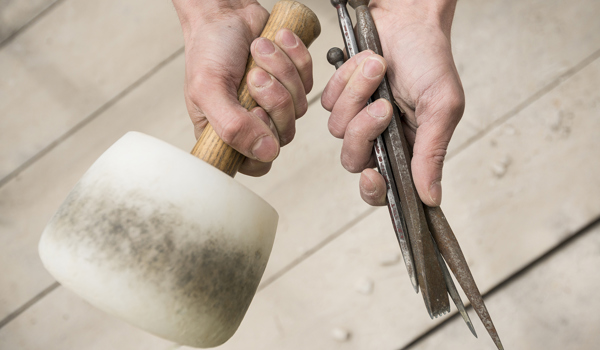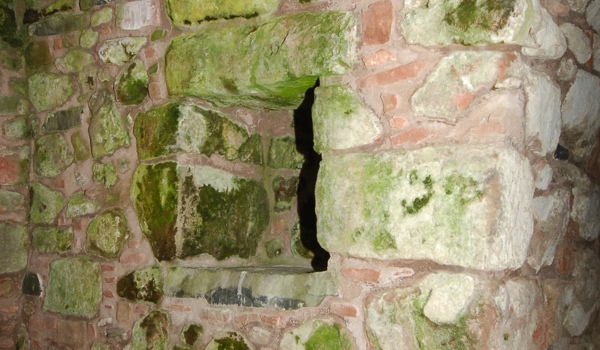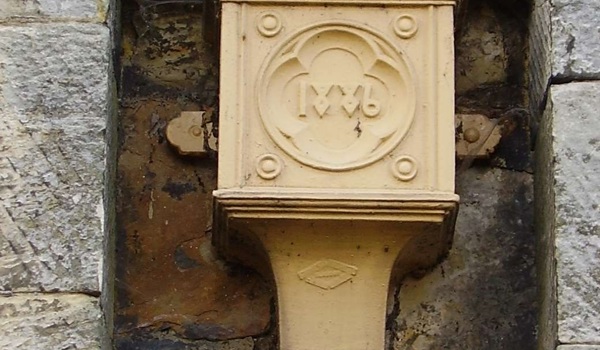- Home
- Building Advice
- Building components
- Roofs
- Bituminous sheet flat roofs
Bituminous sheet flat roofs
Overview
Overview
Flat roofs are usually seen as inferior to pitched roofs, yet can be found on many of Scotland’s traditional buildings – tenements in particular. A flat roof should perform adequately for many years if regularly maintained and repaired.
Flat roofs pose different problems to pitched roofs. They don’t shed water as well, so any defect can quickly become serious. Yet because the inspection of flat roofs is sometimes difficult, they may not receive the attention they require.
Bituminous felt is the most common waterproof covering used on flat roofs. Lead flashing is used to prevent water getting into the junctions between the felt and other roof elements such as masonry walls or parapets.
Common causes of flat roof problems include:
- roof surface problems
- damaged parapet walls or skirting
- deterioration around vents and flues or roof lights
Patch repairs will often be all that’s needed to keep your roof performing at its best. Serious surface problems may mean it’s necessary to resurface the entire roof.
- Next
-
Characteristics
Characteristics
Characteristics
Flat roofs are usually seen as inferior to pitched roofs, but can nevertheless be found on many of Scotland’s traditional buildings. Tenements in particular often have an area of flat roof, which is usually covered in bituminous felt.
Flat roof construction
A flat roof consists of:
- joists
- sarking (wooden boards)
- underlay
- a waterproof covering, slightly sloped to drain off rainwater
Bituminous felt (also known as roofing felt) is the most common covering. The felt is built up in layers, each bonded with a bituminous substance such as tar. The upper surface is sometimes covered in a layer of stone chips set in tar. This makes the felt covering more robust, more weatherproof and better able to deal with solar gain (heat absorbed by the roof structure from the sun).
Flashing (usually made of lead) is used to keep water from entering the junction where a flat roof meets a masonry wall, a parapet or a sloping roof. It is fitted in such a way as to allow for a little movement in the roof structure whilst still remaining watertight. Flashing sealed with tar or cement often doesn’t last, as it becomes brittle and will fracture.
Find out more about flashing and other roofing leadwork.
- Previous
-
Overview
- Next
-
Inspection
Inspection
Inspection
Regularly checking the external surface of a felt covered flat roof gives you the best chance of spotting – and fixing – any problems early on.
Always inspect your flat roof at least once in the autumn, before the winter weather sets in. You should also make extra checks after any storms or gales.
Flat roofs may not receive the maintenance and repairs they require as inspection is sometimes difficult.
Flat roof problem areas include:
- parapets
- gutters and outlets
- eaves
- fixings
- roof lights and openings
- vents and flues
- expansion joints
- roof surface
Initial inspection
Flat roofs should be checked from the inside as well as from outside at ground level. Look at all related areas, including roofing leadwork, cast iron rain goods and chimneys and flues. Note down any concerns or signs of problems to discuss with the contractor who will carry out the repair work.
Damp patches that appear on the ceiling below a flat roof are caused by a leak in the covering. The leak should be located and fixed immediately to avoid further damage. Some searching for the source of the problem may be necessary: the location of the leak and the damp patch may not exactly match up.
Roof-level inspection
The roof surface should be checked for signs of deterioration such as cracking, blistering or crazing. Pools of standing water signal poor drainage.
Soft patches underfoot point to deterioration of the substrate, usually caused by water penetration. Walking directly on the roof can make the problem worse.
Gutters and other water outlets should be checked for blockages, particularly in autumn.
- Previous
-
Characteristics
- Next
-
Common causes of problems
Common causes of problems
Common causes of problems
Flat roofs pose a number of different problems to pitched roofs. They’re not as good at shedding water, so any defect can have a serious impact on the building. Problems with the roof surface, parapets, vents and flues, and roof lights are typical.
Regular inspection of flat roofs is vital.
Roof surface
Roof surface problems may include:
- tears along the line of the roofing deck support joists – caused by thermal or moisture movement, wet insulation or sagging of the roof deck
- cracks, splits and rucks – resulting from thermal or moisture movement between the roof substrate and membrane
- surface crazing – due to lack of adequate protection from the harmful effects of the sun or, less often, chemical attack
- blisters – caused by water vapour pressure below the roof covering
- punctures and rips – due to impact damage by people or loose debris
Patch repairs will sometimes be sufficient, or it may be necessary to resurface the entire roof.
Parapets
A parapet wall can sometimes become cracked or stones may be dislodged, most often as a result of water ingress or wind. Unsound masonry should be rebuilt or repointed as appropriate.
Split, torn or damaged skirting where the edge of a flat roof meets the masonry parapet can let in water. Damaged skirting must be repaired or replaced, preferably by an experienced contractor.
Skirting deterioration can be caused by:
- thermal or moisture movement
- the lack of an adequate key (roughness) to the backing
- a failure in the original design or workmanship
Vents and flues
Vents and flues often exit through flat roofs, and the roof coverings around them can become soft, discoloured or generally deteriorate. Condensed solvents and other harmful agents leaching from the vent or flue may be to blame.
Roof lights
Problems around a roof light or other opening may include:
- wind damage to flashings
- defective sealing around the base of the roof light
- rotting or degraded timber elements
- Previous
-
Inspection
- Next
-
Maintenance and repairs
Maintenance and repairs
Maintenance and repairs
A flat roof should perform adequately for many years if well maintained. Patch repairs will often be all that’s needed to fix common causes of problems with flat roofs and keep your roof performing at its best.
Serious surface problems may mean it’s necessary to resurface the entire roof. You should consider this option where patch repairs are no longer enough to ensure that the roof covering remains weatherproof. It’s best to engage a contractor experienced in such work to do the job.
Localised roof surface repairs
Tears along the line of the support joists of the roofing deck, resulting from thermal or moisture movement, or wet insulation, are repaired by:
- Cutting back the existing felt.
- Allowing the area to dry.
- Applying a new layer of high performance felt with a suitable overlap between the new and existing material.
Cracks, splits and rucks caused by thermal or moisture movement between the sarking (wooden boards) and bituminous layer (waterproof covering) may require localised re-roofing. A high performance felt should be used.
Surface crazing caused by the sun (or, less often, chemical attack) requires no treatment, just regular checks to monitor its progress. Areas where crazing is widespread will have to be re-roofed and specialist protection put in place.
Blisters should be cut and any trapped moisture allowed to escape before being re-bonded to the underlay. The source of the moisture problem should also be traced and resolved.
Punctures and rips caused by impact damage should require only patch repairs.
Other common repairs
These include:
- rebuilding or repointing unsound masonry at the parapet wall
- repairing or replacing damaged skirting along the roof edge
- repairing softened roof coverings around vents or flues and adding a new bituminous layer or raising the vent to protect the area against leached solvents
- making good damage to roof lights by repairing flashings, ensuring seals are sound and renewing rotten frames
- Previous
-
Common causes of problems
- Next
-
Permissions for work
Permissions for work
Permissions for work
You should check whether you must first apply for planning permission or any other type of consent before making any changes to a flat roof. Listed building consent or conservation area consent may be needed, depending on the property and its location. Contact your planning authority to find out more.
Learn more about listed building and conservation area consent.
- Previous
-
Maintenance and repairs
- Next
-
History
History
Contacts
Contacts
Get in touch if you have any questions. We will be happy to help.
- Technical Research Team
- 0131 668 8951
- technicalresearch@hes.scot
- Previous
-
History
- Next
-
Resources
Resources
Resources
Professional institutions
The National Federation of Roofing Contractors
Confederation of Roofing Contractors
The Institute of Roofing
Publications
Inform guides
An introduction to conservation and maintenance of traditional buildings for complete beginners.
Bituminous Sheet Flat Roofs: Their Repair and Maintenance
Other resources
- Previous
-
Contacts
Related to Bituminous sheet flat roofs

Hiring a contractor
Get advice on hiring a contractor including choosing a contractor and managing the work.




